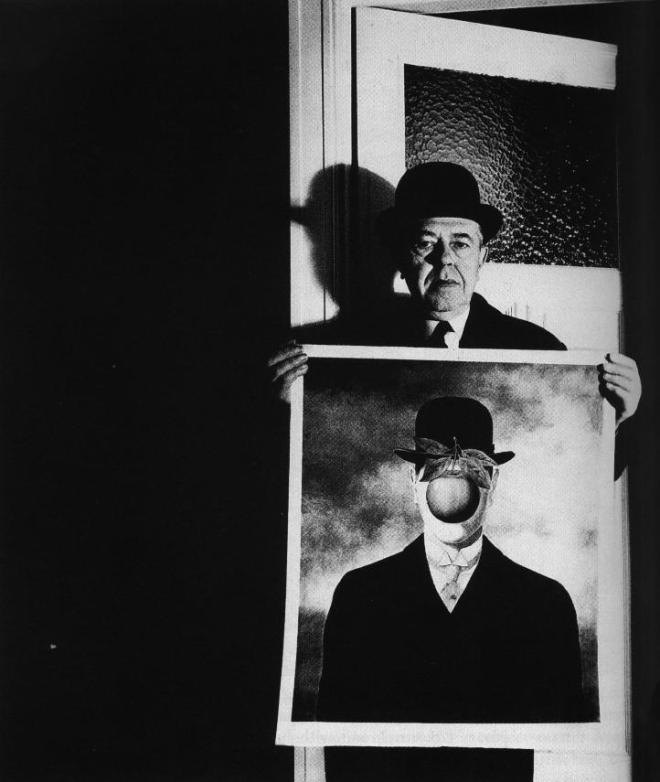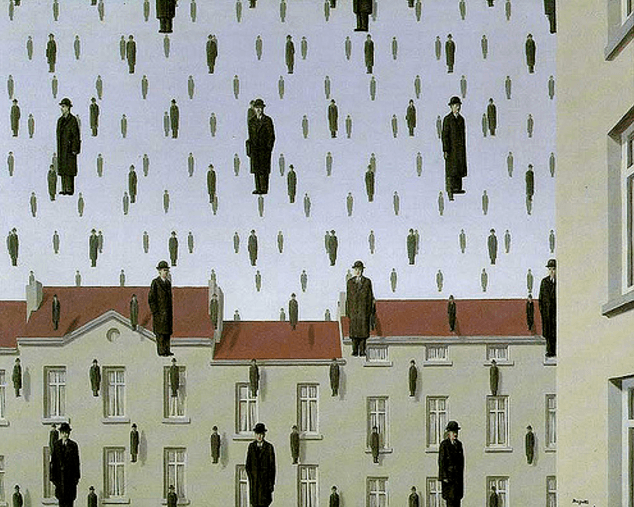3 Things to Know About René Magritte
1. A Troubled Childhood
René Magritte's childhood is a murky period of his life. He was born in 1898 in Lessines, Belgium, but his parents faced financial difficulties that led them to move frequently. When he was only 12 years old, his mother ended her life by drowning in the Sambre River. This tragedy undoubtedly left a lasting impact on the future painter, who disliked having his works analyzed through this lens of psychology.

Nevertheless, some art historians have attempted to analyze his paintings. For instance, they draw parallels between the veils covering the faces of his Lovers and the dressing gown in which his mother was found a few days after her disappearance...
2. René Magritte: A Complex Personality
The creator of "The Son of Man" (1964) is a paradoxical figure. His image is associated with that of a bourgeois man, dressed in a suit and bowler hat. He shared his life with Georgette, whom he met at the age of 15. They lived together in a house in Brussels, which has now become the Magritte Museum.

Despite his subversive side, Magritte had a particularly childlike spirit. In fact, he often enjoyed gathering writer and philosopher friends around his paintings, encouraging each one to contribute to the search for a title. Magritte is an enigmatic individual, difficult to pin down, who preserved his inner world throughout his life.
3. A Unique Surrealism
Magritte's key inspiration came from Giorgio de Chirico's work "Love Song." In 1923, he discovered this distinctive universe, which he continued to explore in his paintings. Familiar objects placed in an unfamiliar space, estranged from reality. Both close and hostile, Magritte disrupts the art world.

Magritte is a surrealist artist. He shifts and distorts reality in his images. However, his surrealism differs somewhat from the movement initiated in Paris. Magritte had disagreements on this matter with André Breton. The Surrealists in Brussels advocated for a mental form of painting, focusing on dialectics and science, while those in Paris sought a more psychic creation drawn from the unconscious.
Magritte's paintings also have the distinct quality of being explicit. His minimalist compositions are straightforward and have little in common with the intricate works of someone like Dalí. In fact, he often said that everything he wanted to express is already right in front of our eyes...
One Day, He Said
Everything in my works is based on the certainty that we belong, in fact, to an enigmatic universe.
Did You Know?
Magritte had several dogs, all named "Loulou." They were alternately black, white, and so on, but always named "Loulou." Witnesses attest to his affection for his canine companions, and today, the dogs even help date the painter's photographs.
His Greatest Works
Magritte's paintings all convey a message. He uses elements of reality to serve the mystery. Magritte is an explorer of life's enigmas, leaving doors open for contemplation through his images. For him, images are a means of expressing words. When he names his painting "This is not a pipe," for example, it's clear that it's not a pipe, but rather an image of a pipe...




